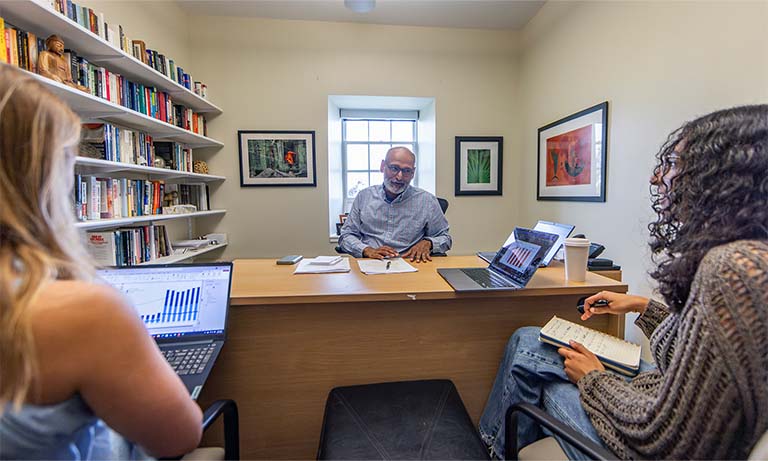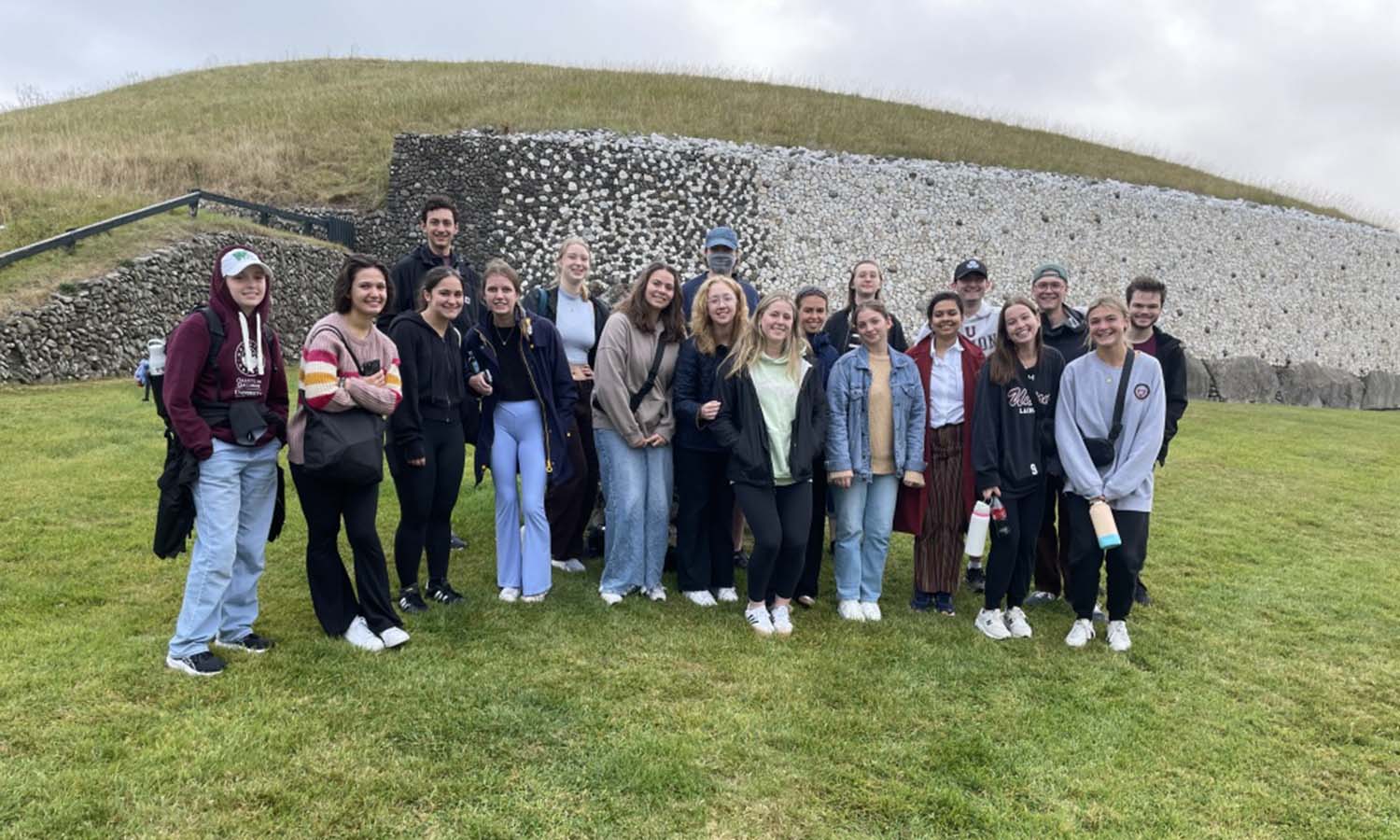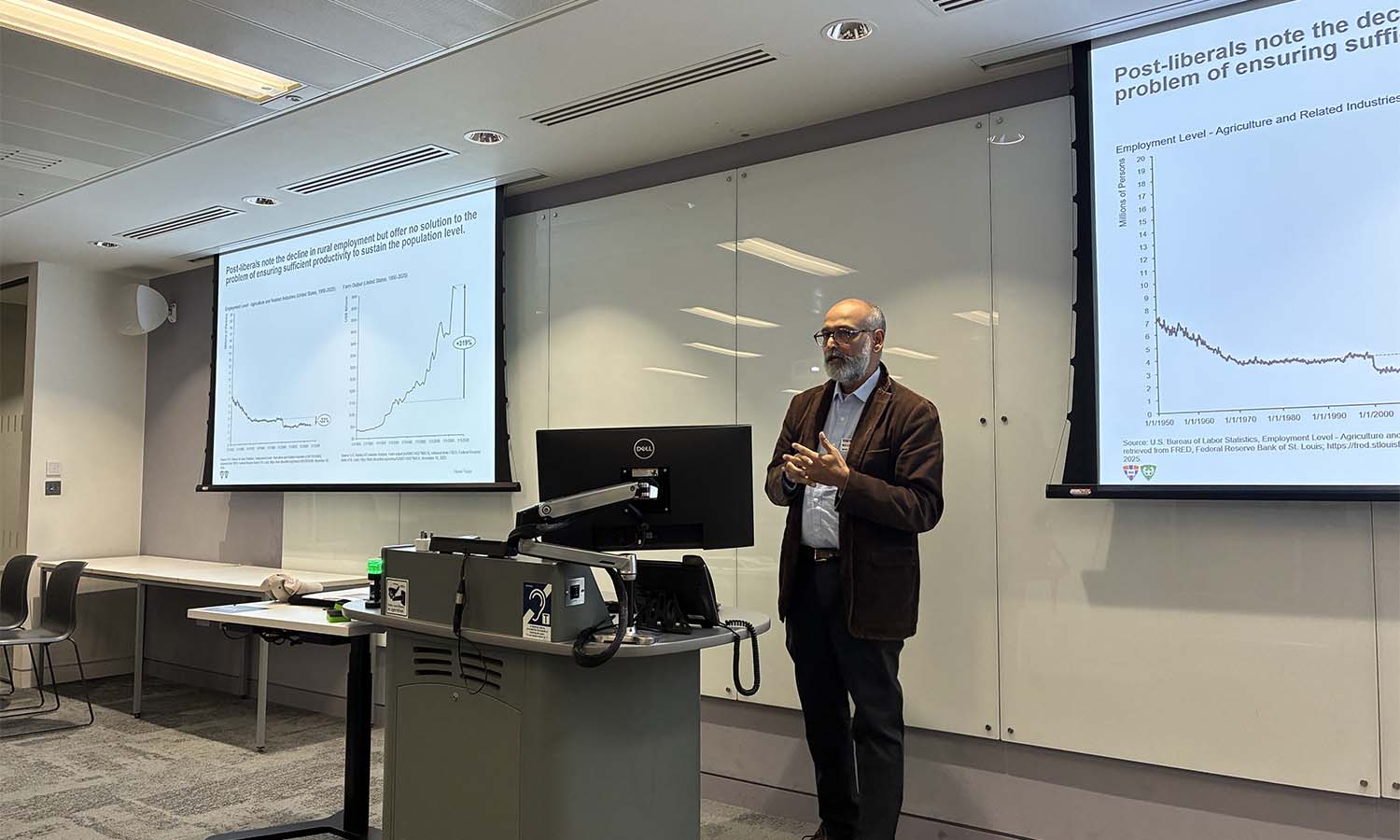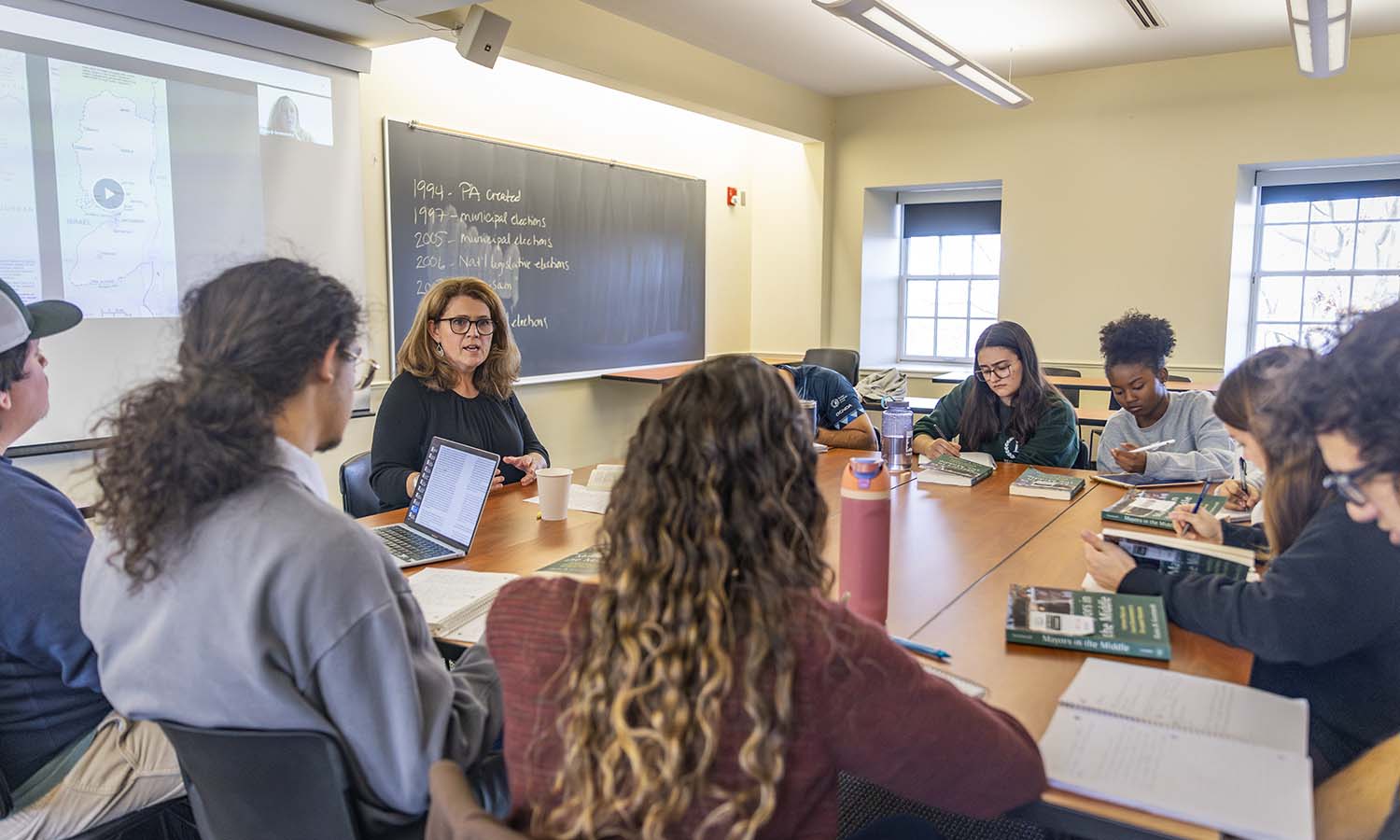
HWS News
29 July 2025 • Research International Relations Internships Harness the Power of Digital Storytelling
Under the guidance of Professor Vikash Yadav, two International Relations students are mastering professional-grade software to transform their research data into compelling visual presentations.
The ability to weave compelling narratives from data and technology is fast becoming an essential feature of a liberal arts education. In response, Professor of International Relations Vikash Yadav has tailored a summer internship to allow Emma Aluck ’27 and Brianna Reyes ’28 build their digital storytelling skills.
Yadav has also developed a methods course centered on data visualization. His goal with both, he explains, is to help students learn how to present complex research findings clearly and succinctly, an essential skill for success in graduate school and their future careers.
Aluck and Reyes began their internships by improving their Excel skills, then used software programs like Thinkcell and Datawrapper to turn their research data into appealing interactive charts and graphs. Finally, they mastered Google Earth Studio to make their own maps and Adobe After Effects to add 2D and 3D elements into the Google Earth imagery.
Aluck’s research is focused on migration patterns caused by the economic crisis in Venezuela as well as potential solutions to the underlying factors driving that crisis. “I now have a good understanding of how to make effective visual tools. I think that learning to work with our research in this way will really help us in our future academic and professional careers,” says Aluck.
Reyes’ research is focused on the links between Pakistan’s high rate of stunting, a form of malnutrition, and the economic insecurity of women. “These are important skills to have. I think they help us compete,” Reyes says.
“Essentially what they've been doing is learning to make animated maps to draw the attention of their audience into their presentation. Some of this software, particularly Adobe After Effects, is very complicated but in a very short time they've gained a remarkable level of proficiency with the programs,” Yadav says.
The biggest challenges in this process, Yadav says, are guiding students to build presentations using their own data instead of relying on information from the internet and teaching them how to create maps, charts or graphs, so that they can better convey a coherent idea.
“I think it's difficult for students initially, because they are invested in their research and naturally want to present all of it. But the reality is, the audience just wants to know the big picture. What did you learn? Why do I need to know what you learned? So, they need to learn to get inside the head of the person who's looking a slide for maybe 10 or 20 seconds, and then ask themselves how quickly I can make my point?” Yadav says.
Aluck will spend the fall 2025 semester in France as part of the French Honors Program. In the spring, she will serve as an International Relations Teaching Fellow. She was a member of the William Smith Swimming and Diving team for two years and is a Liberty League All-Academic.
This fall, Reyes will serve as a Teaching Assistant to Professor and Chair of International Relations Stacey Philbrick Yadav. A member of the HWS Debate team, Reyes reached the finals in the 2025 Novice Tournament National at Cornell University, allowing HWS to take finalist honors for the fourth consecutive year at the competition.
Top: Professor of International Relations Vikash Yadav speaks with Emma Aluck ’27 and Brianna Reyes ’28 on their research.



